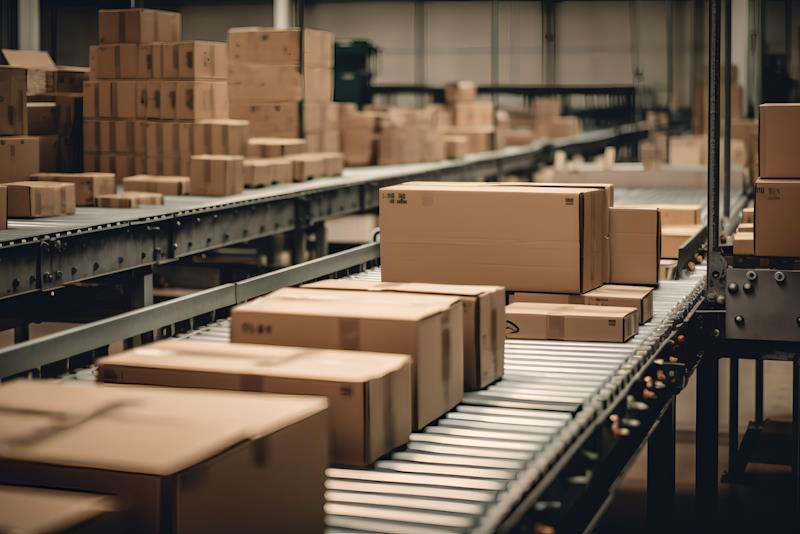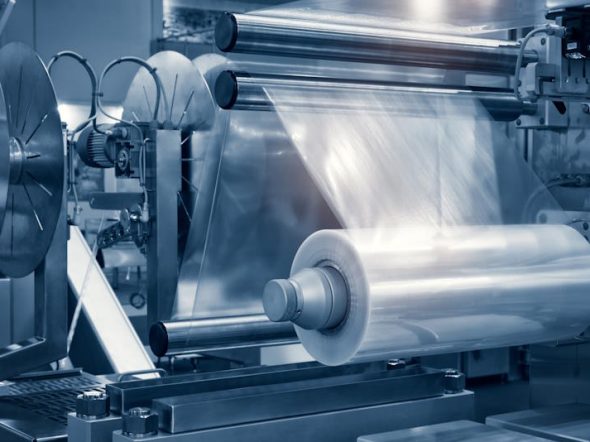In a rapidly evolving global economy, industrial packaging represents a significant aspect of various industries. Its role in the environment is drawing increasing scrutiny. As environmental sustainability gains traction, it has become incumbent upon every entrepreneur to adopt eco-friendly practices, especially in the realm of industrial packaging. These practices align with the economic principle of frugality, reducing waste while enhancing business efficiency.
Adopting Eco-Friendly Packaging Materials
According to Palmetto, a fundamental strategy involves shifting to eco-friendly packaging materials. In an era of ubiquitous plastic, exploring alternative materials that are both sustainable and cost-effective is crucial. The quest is on for biodegradable, recyclable, or compostable materials that can perform on par with traditional options.
Consider alternatives such as corrugated bubble wrap or biodegradable packing peanuts. Not only are they effective at protecting your product, but they also reduce the environmental footprint. Moreover, customers appreciate businesses that value sustainability, enhancing your brand image.
Innovation In Package Design
Strategic packaging design can contribute significantly to sustainability efforts. Designing with a ‘less is more’ philosophy can be an effective approach. Here, the objective is to use minimal materials without compromising product safety and aesthetic appeal.
Think about the packaging for a simple product like a wristwatch. Is a large, elaborate box necessary? Could a smaller, simpler package provide the same level of protection and brand visibility? Experimenting with your packaging design can lead to substantial material and cost savings.

Optimizing Packaging Processes
Enhancing sustainability isn't only about materials and design—it also involves optimizing your packaging processes. Re-evaluating and streamlining these processes can lead to less waste, increased efficiency, and reduced costs.
For instance, automated packaging systems can precisely measure and cut materials, reducing waste. Also, consider implementing a waste management system that efficiently separates and recycles by-products from your packaging process.
Reusing And Recycling
Incorporating a culture of reusing and recycling into your business model will promote sustainability. Encouraging customers to return packaging for reuse or recycling can have a significant impact. This method can create a closed-loop system, reducing the need for new packaging materials.
Implementing a package return policy might seem like a daunting task initially. However, it's a long-term investment that not only contributes to environmental sustainability but also generates customer goodwill.
Transparent Sustainability Reporting
Transparency is key when it comes to reporting your sustainability efforts. Your customers, shareholders, and the wider public will value honesty and clarity. It's not enough to merely adopt sustainable practices; you must also communicate your efforts and their impact.
Invest in a robust tracking system to monitor your sustainability efforts. Be open about your successes and challenges. Regularly share updates about your progress towards sustainability goals. This kind of transparency will enhance your reputation as a responsible, frugal entrepreneur.
Collaborating For Sustainable Solutions
Collaboration plays a crucial role in driving sustainability. Teaming up with other businesses, suppliers, or even competitors can expedite the development of sustainable packaging solutions. These partnerships can lead to shared learning, resource pooling, and breakthrough innovations.
Consider joining industry consortiums focused on sustainable packaging. Such collaborations can provide access to research, expertise, and resources that might be otherwise unattainable. Moreover, joining hands with others underscores your commitment to sustainability, boosting your brand image.
Consumer Education And Engagement
Educating your consumers about your sustainable practices can pay dividends. Not only does this bolster your image as a responsible business, but it also empowers consumers to make informed choices. Active engagement with customers can even stimulate new ideas for improving your packaging sustainability.
Use your packaging as a platform to share your sustainability story. You might, for instance, include information about the materials used, how to properly dispose of the packaging, or how the customer can participate in your recycling program. In this way, you turn your packaging into a powerful tool for customer engagement.
Leveraging Technology For Sustainability
Embracing technology can significantly improve your sustainability efforts. Technologies such as AI and IoT can enable efficient packaging design, waste management, and tracking of sustainability metrics. They provide opportunities to innovate and optimize, creating tangible benefits for both the environment and your bottom line.
AI, for example, can help design optimal packaging that uses the least amount of material without sacrificing product protection. IoT sensors can monitor waste levels in real-time, providing actionable data to improve waste management. Such technologies are a boon for the frugal entrepreneur, delivering both cost savings and sustainability benefits.
Regulatory Compliance And Beyond
Regulatory compliance is a critical aspect of sustainability in packaging. Governments worldwide are implementing stricter regulations around packaging materials and waste, driven by rising environmental concerns. However, as a frugal entrepreneur, your goal should be compliance and exceeding these standards whenever possible.
By going beyond compliance, you position your business as a leader in sustainability. This can differentiate your brand in the market and build trust with customers, suppliers, and investors. Therefore, staying abreast of the latest regulations and investing in exceeding them is a sound strategy for long-term success.
Life Cycle Analysis (LCA) For Sustainable Decision Making
A comprehensive understanding of your packaging's environmental impact requires looking at its entire life cycle. This includes sourcing of materials, manufacturing, transportation, usage, and disposal or recycling. A life cycle analysis (LCA) can provide valuable insights into where you can make the most significant sustainability improvements.
The results of an LCA can guide decisions about material selection, design changes, or process improvements. Furthermore, LCA results can be shared with stakeholders to demonstrate your commitment to sustainability and the progress you've made.
The Business Case For Sustainability
Many entrepreneurs are discovering that sustainability isn't just an ethical choice; it also makes good business sense. Sustainable practices can lead to cost savings, improved customer loyalty, and better risk management.
Investing in sustainable packaging can reduce material and waste disposal costs. Customers are increasingly loyal to brands that demonstrate a commitment to sustainability. Furthermore, by proactively addressing sustainability issues, you mitigate risks associated with regulatory changes or consumer backlash.
Conclusion
Embracing sustainability in industrial packaging involves a multifaceted approach. It requires innovative thinking in materials, design, processes, and communication strategies. These eco-friendly practices align perfectly with a frugal business approach, demonstrating that economic efficiency and environmental responsibility can go hand in hand.
